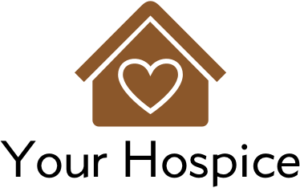
What we know so far is that COVID-19 is spread much like the regular flu—through coughs and sneezes that put droplets in the air and on surfaces. It may be 2–14 days after exposure before a person has symptoms. That means people can spread the virus without knowing it. And many have symptoms that seem much like a cold, so they don’t think to alter their behavior.
The good news is that 81% of those who get COVID-19 seem to have a fairly mild case—between a cold and the seasonal flu. But 14% of those infected have a severe case, involving pneumonia and low blood oxygen levels. About 5% have a critical case involving respiratory failure, septic shock, or multiple organ failures.
So far it appears that only 2%–4% of those who get COVID-19 actually die. Scary as that sounds, bear in mind that means 96%–98% recover fully. Just like the seasonal flu, frail older adults and persons with respiratory problems, such as COPD, are hit the hardest.
The signs of COVID-19
- Fever
- Cough
- Shortness of breath
Call the doctor before you go. The doctor’s office will guide you concerning the need for an office visit. Ask about suggestions for relieving symptoms and guidelines for calling 911.
If someone in your household is sick
Do not leave home except for medical care. The entire household is now contagious.
Care at home
- Follow viral prevention strategies. (See tips below.)
- Employ the doctor’s recommendations to improve breathing, reduce fevers, and ease discomfort.
- Monitor your loved one’s symptoms. If you need to call 911, tell them your concerns about COVID-19.
- Isolate the patient from others in the house. He or she should stay in a separate room, ideally with a separate bathroom.
- Wear facemasks—both you and the patient—when in the same room. Throw disposable facemasks away. Do not reuse.
- Use disposable facemasks and gloves when you touch or have contact with the patient’s blood, stool, or body fluids such as saliva, sputum, nasal mucus, vomit, urine. Throw out the disposables after using them. Do not reuse.
- Avoid sharing household items with the patient, such as dishes, drinking glasses, cups, eating utensils, towels, bedding, or other items. Wash these items thoroughly after use.
- Clean laundry thoroughly. Immediately remove and wash clothes or bedding that have blood, stool, or body fluids on them. Wear disposable gloves while handling soiled items and keep soiled items away from your body. Use normal detergent and set the dryer to the highest appropriate temperature.
- Place all used tissues, disposable gloves, and facemasks in a lined container. Tie off before placing in the trash.
- Isolate pets from the patient. At this time, it is not known if domestic animals can contract COVID-19.
- Turn away visitors who do not have an essential need to be in the home.
- Monitor your own symptoms. Have a Plan B for who will care for you and the patient if you become sick.

Viral prevention strategies
Because there is no cure for COVID-19, your best protection is to follow these guidelines put out by the Centers for Disease Control and Prevention (CDC).
- Avoid close contact with people who are sick (stay at least 6 feet away).
- Avoid touching your eyes, nose, and mouth.
- Stay home if you feel unwell.
- Cover your coughs and sneezes with a tissue. Throw tissues away immediately. Do not let them collect on tables or chairs around the house or at work.
- Wash your hands often with soap and water for at least 20 seconds, especially after going to the bathroom, before eating, and after blowing your nose, coughing, or sneezing. Be sure to clean the backs of your hands as well as the palms. Also clean between your fingers and under your nails. If soap and water are not readily available, use an alcohol-based hand sanitizer with at least 60% alcohol.
- Clean and disinfect frequently touched objects and surfaces such as tables, countertops, light switches, doorknobs, cabinet handles, bathroom fixtures, toilets, phones, keyboards, tablets, and bedside tables. Use a household cleaning spray or wipe. Follow instructions for safe and effective use of the cleaning product, including precautions to take such as wearing gloves and making sure you have good ventilation while using the product. If you do not have cleaning spray, make a solution of household detergent and water.
- Facemasks should be used by people who show symptoms of COVID-19 to help prevent the spread of the disease to others. People who are well do not need to wear a facemask unless they are in active contact with someone who is sick.

